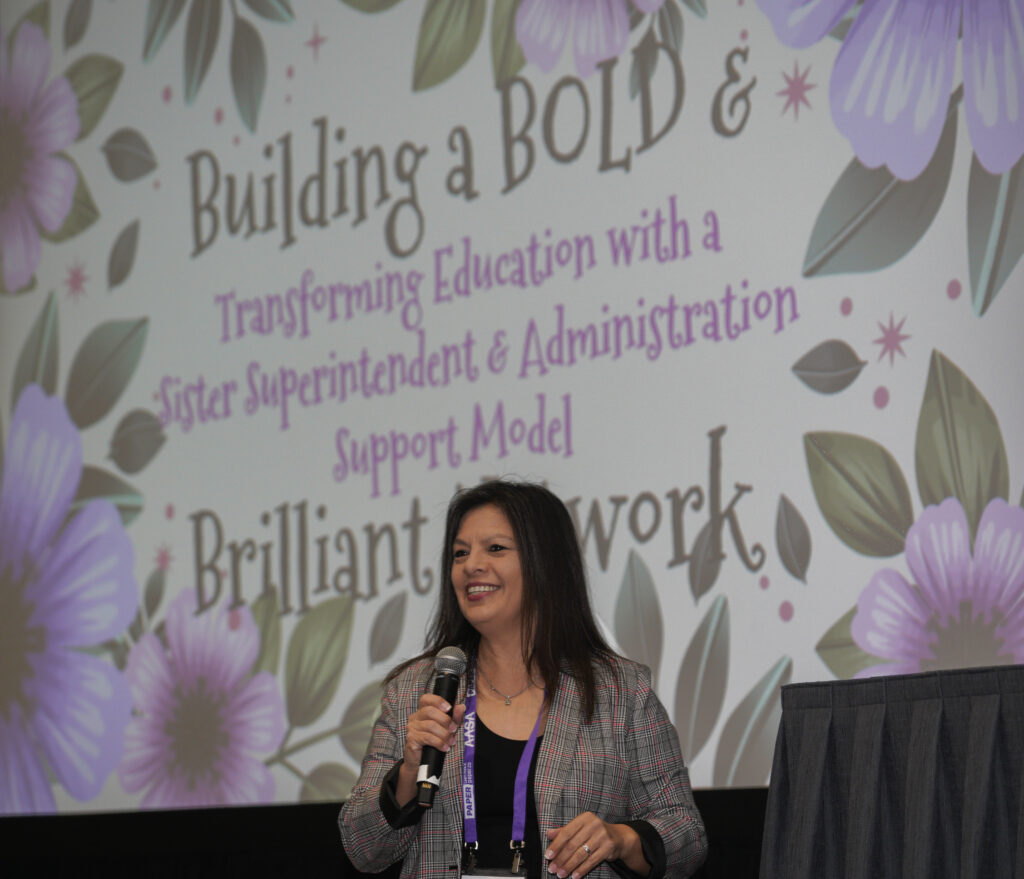A room full of female principals and superintendents attending the AASA National Conference on Education woke up bright and early on Saturday to share the unique challenges they face as female school leaders.
Attendees of the education session, titled “Attention AASA Sisters! – Build a Bold, Brilliant, and Beautiful Network of Sisters,” were encouraged to move out of their seats to take part in small group discussions.
The session was led by Maria Armstrong, executive director of the Association of Latino Administrators and Superintendents. She was joined by Elda Garcia, executive director of national partnerships for Imagine Learning.
Armstrong and Garcia shared data about the number of women in K-12 district leadership positions that were unsurprising to most of the attendees. Despite 70 percent of teachers nationwide being female, only 40 percent of principals and 15 percent of superintendents are female, she contended. (The most recent AASA survey data shows at least a quarter of the nation’s superintendents are female.)
“If in fact 70 percent of teachers are female, but we still only have 15 percent of superintendents being female, that’s bad,” Armstrong said. “We clearly still have work and fighting to do.”

Attendees were asked to dig deep and identify the barriers that stand in the way of women achieving higher positions in education, whether the superintendency or another administrative leadership post.
Some attendees cited family obligations as their personal barrier, while others discussed sexism and unsupportive school district cultures.
As attendees shared their stories, others in the room felt more inclined to share their own experiences or to show support to those around them.
The panelists argued that part of the fight against perceived, self-imposed and real barriers to educational leadership is having a strong professional network of other female leaders you can trust and lean on.
Armstrong acknowledged that building an effective network is difficult, especially if you have felt betrayed by your network in the past. However, Armstrong warned about the dangers of pettiness and women tearing each other down.
“When you have women biting other women, that’s detrimental,” Armstrong said. “It’s so hard to do the work of lifting one another when that happens.”
Armstrong and Garcia ended the session by inviting the women in the room to connect with each other to build their network of AASA sisters.
(Eugenie Budnik is a senior majoring in journalism/advertising at San Diego State University and a reporter with Conference Daily Online.)


